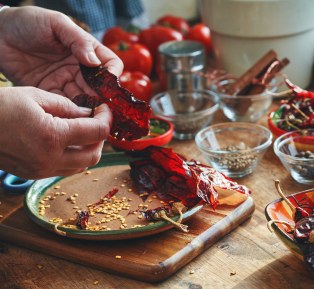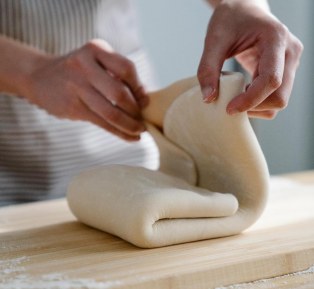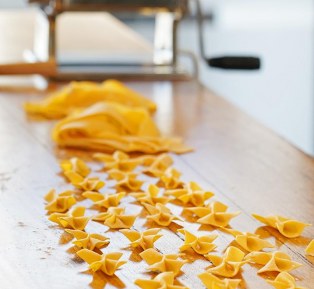
Culinary Inspiration by Otao Kitchen
Cook . Connect. Celebrate
At Otao Kitchen, we believe cooking is one of the most powerful ways to connect—with yourself, your loved ones, and the world around you. It can put a smile on your face, bring family and friends together, and create memories that last a lifetime.
But cooking is more than just connection—what you choose to cook and eat impacts your health and the health of the planet. That’s why we’re passionate about making it as easy and enjoyable as possible for everyone to experience the joy of good, home-cooked food.
“Cook to Connect” is at the core of everything we do. Through our blog, food experiences, and global travel inspiration, we explore the deep relationships between cuisine, culture, and community. From vibrant street food across the globe to time-honoured family recipes passed through generations, we share with you the stories, flavours, and traditions that shape the way the world eats.
Here, you’ll find:
Practical cooking tips and techniques
Authentic global recipes
Cultural and culinary insights
Event planning advice
Kid-friendly cooking inspiration
Travel stories and destination food guides
Seasonal celebrations and global food festivals
Whether you're in your home kitchen or exploring a faraway land, we’re here to help you cook with purpose—and connect with the world through food.
Best Pasta Making Classes Melbourne
Have you ever thought about making pasta from scratch? You want to make your own pasta but don’t know how to start. Let’s discover this delicious craft in pasta making classes and see why these classes are so special.
What is the Pestle and What is the Mortar
Ever wondered about those two kitchen tools that look like sturdy bowls and clubs? Well, they're called pestles and mortars. You might have seen them in your grandma's kitchen or on cooking shows, but do you know what they really do and why they're essential?
5 Creative Ideas for Work Christmas Party
It's that time of the year again, time to gear up for a fantastic work Christmas party! Turn your party into the highlight of the year for everyone in the office. Imagine an event that's like a buffet of fun, offering something for everyone's taste. But it's more than just the fun; it's about weaving stronger bonds among teammates. This party is a chance for everyone to connect, share, and create moments that build a tighter-knit team.
Best Vegetarian Cooking Class Melbourne
In a world full of different foods, vegetarian cooking shines bright! It's all about delicious tastes and good health. With veggies, fruits, grains, and beans as the stars, it's a cooking journey that's catching everyone's attention, from experienced chefs to kitchen newbies.
Discover Best Private Cooking Classes Melbourne
Are you eager to spice up your culinary skills while indulging in a personalized cooking experience? Look no further than Melbourne's vibrant food scene, where private cooking classes offer a delightful blend of learning, fun, and delicious flavors.
5 Corporate Event Ideas - A Key for your business success
When companies get together, it’s not just about meetings. It’s about creating something special that brings everyone closer. This guide is here to help with fun and cool corporate event ideas for your business.
Explore Cooking Classes Melbourne with Otao Kitchen
Dive into a world of diverse culinary experiences in Cooking Classes Melbourne with Otao Kitchen. From Thai, Japanese, Chinese to Latin American cuisines, explore cultural flavors and hands-on learning in a vibrant culinary setting.
Top 10 Food Cultures Around the World – A Tasty Journey for the Senses
Top 10 Food Cultures Around the World
Food is more than fuel. It’s identity, art, history, and joy on a plate. Every bite can tell a story – of land, people, and passion. While every food culture has something delicious to offer, some countries have elevated their cuisine to a global love affair. Here’s CNN Travel’s take on the top 10 food cultures in the world, and why they continue to inspire chefs, foodies, and travellers alike.
So, where should your taste buds travel next?
Vietnamese Cooking Experience At OTAO Kitchen
OTAO Kitchen is a Vietnamese cooking school run by Ha Nguyen and Ricky Hewton on Richmond’s Victoria street, which is well known for its Vietnamese restaurants and grocery stores. I was invited to attend one of the cooking classes late last year and keenly accepted, given my love to Vietnamese food and the country itself.
You may also want to try
Indonesian Feast with Tasia & Gracia Seger New
3 hours
$225
Fold & Flow - MFWF
2 Hours
$157
The Confident Home Chef – Sauces, Fermentation & Pickling Workshop
1 Day (9-4pm)
$745
The Confident Home Chef – Bakery Specialties Workshop
1 Day (9-4pm)
$745
The Confident Home Chef – Pastry Specialties Workshop
2 Days (9-4pm)
$745
The Confident Home Chef – Vegetable & Plant-Based Cooking Workshop
1 Day (9-4pm)
$745
The Confident Home Chef – Seafood Mastery Workshop
24 Hours
$745
The Confident Home Chef – Poultry Essential Workshop
1 Day (9-4pm)
$745
The Confident Home Chef – Pork & Game Essentials Workshop
1 Day (9-4pm)
$745
















